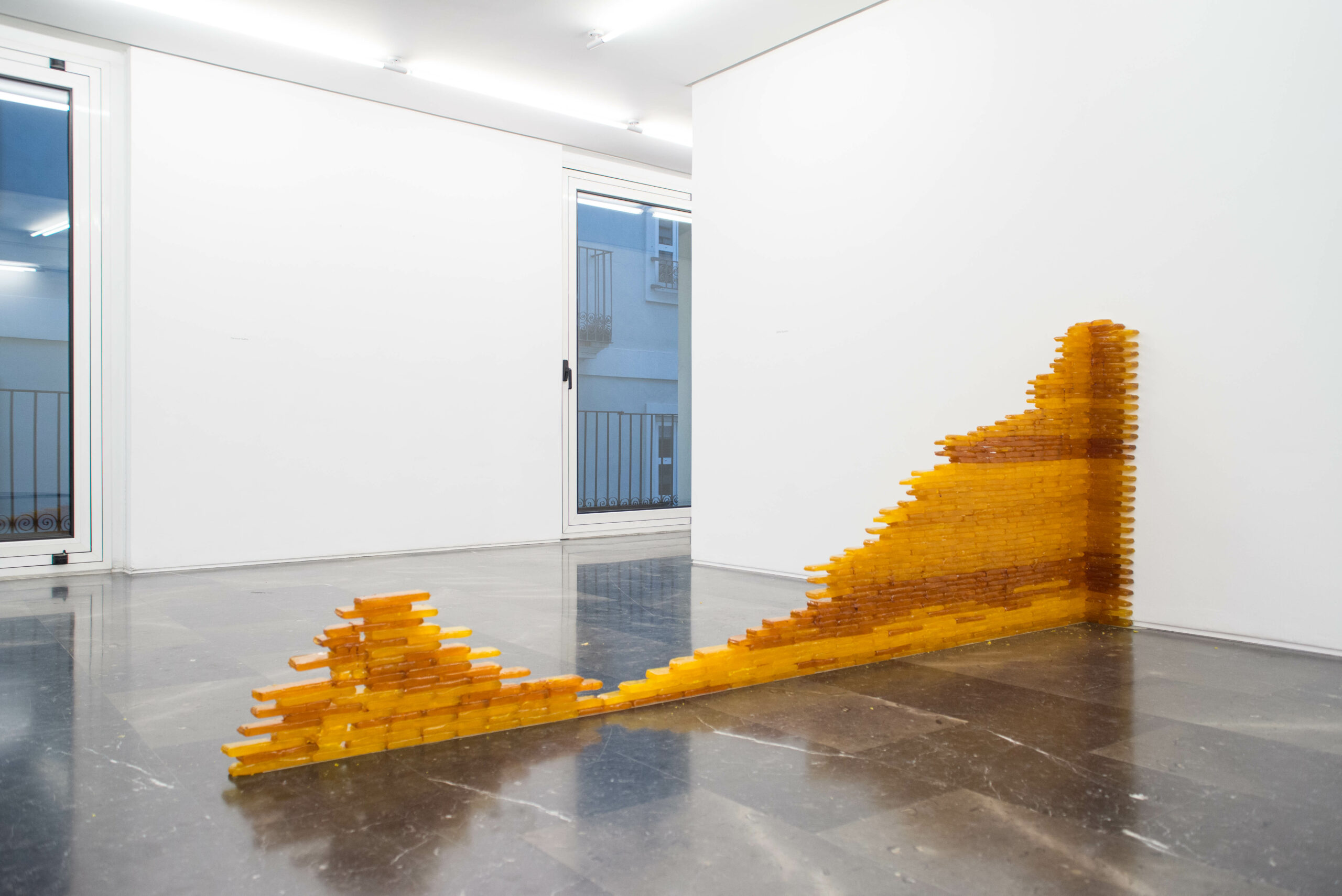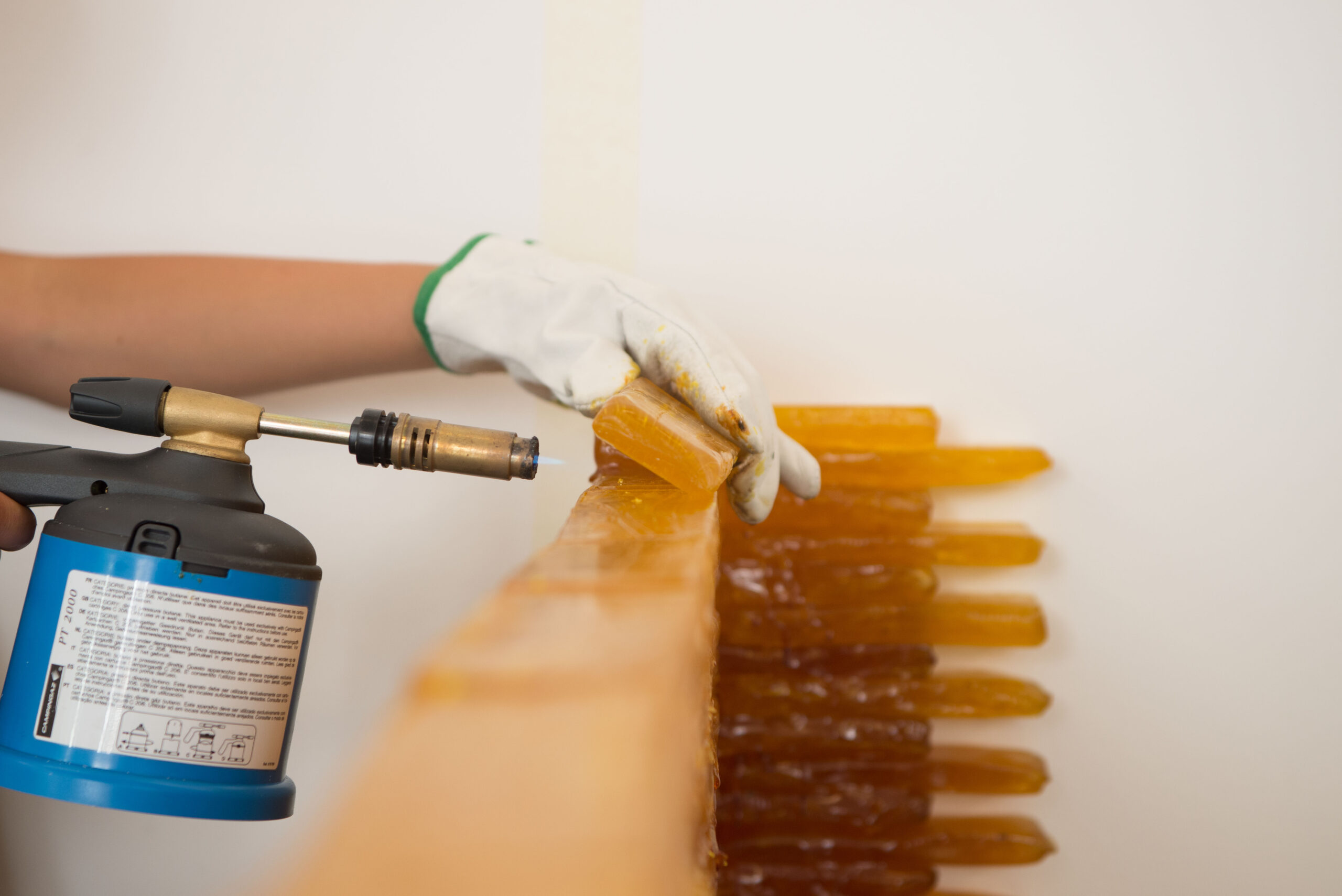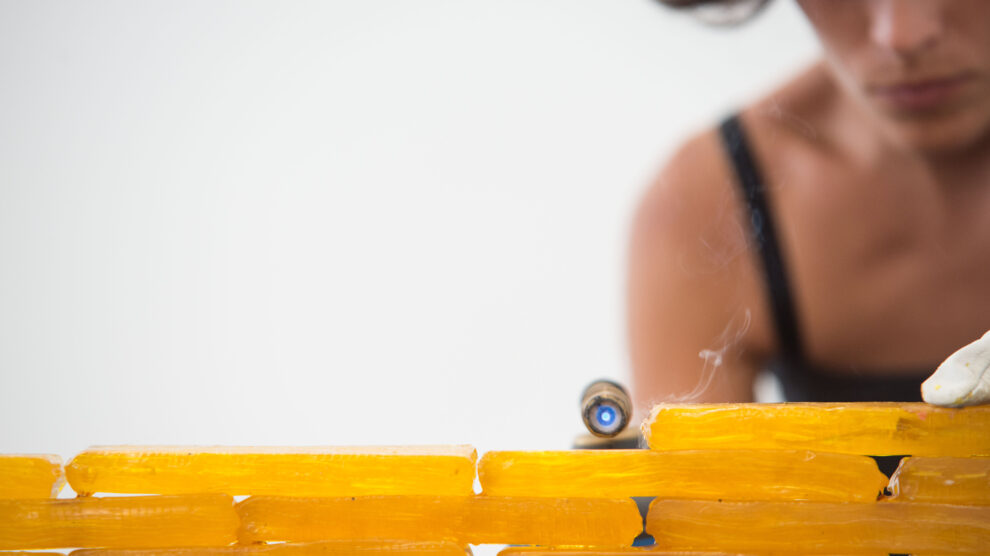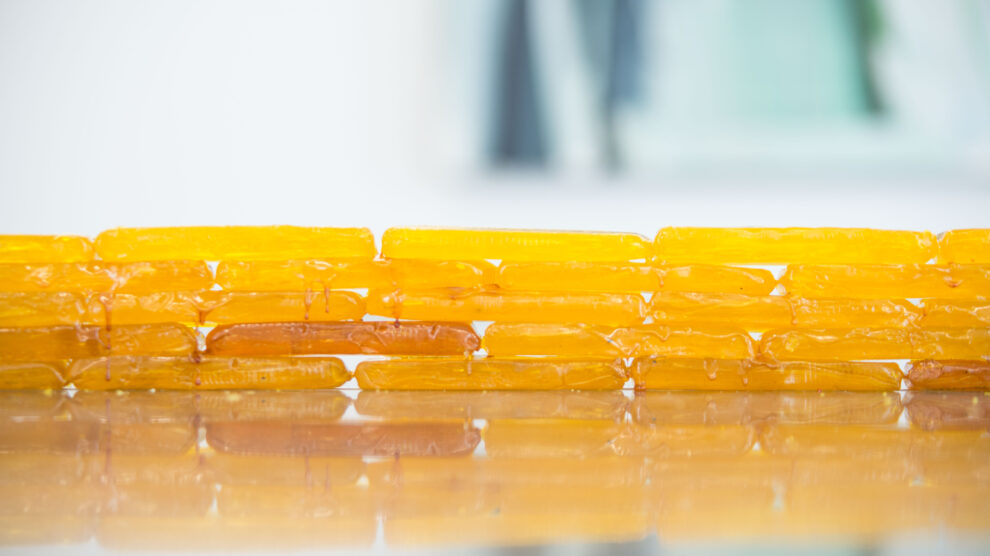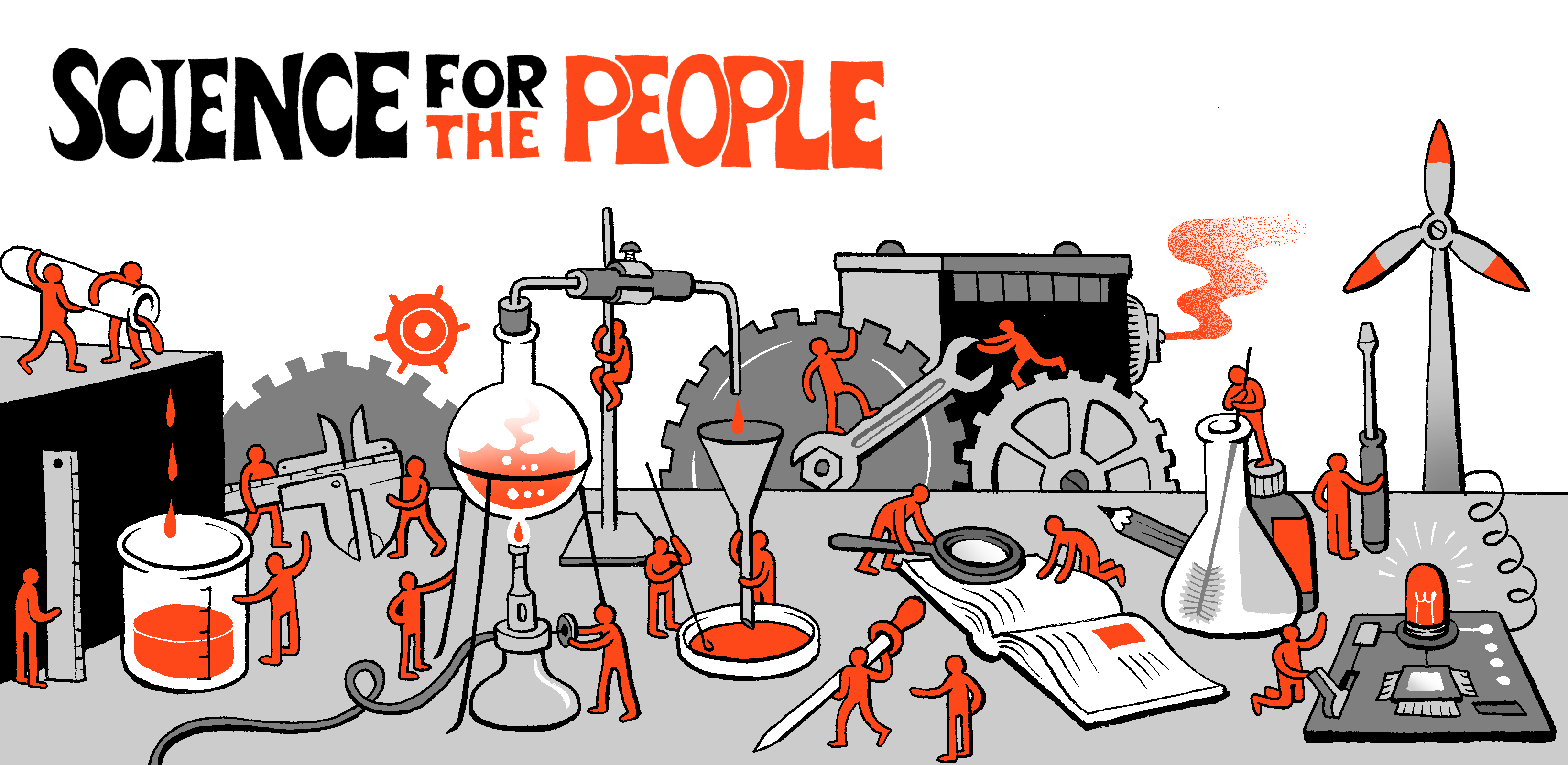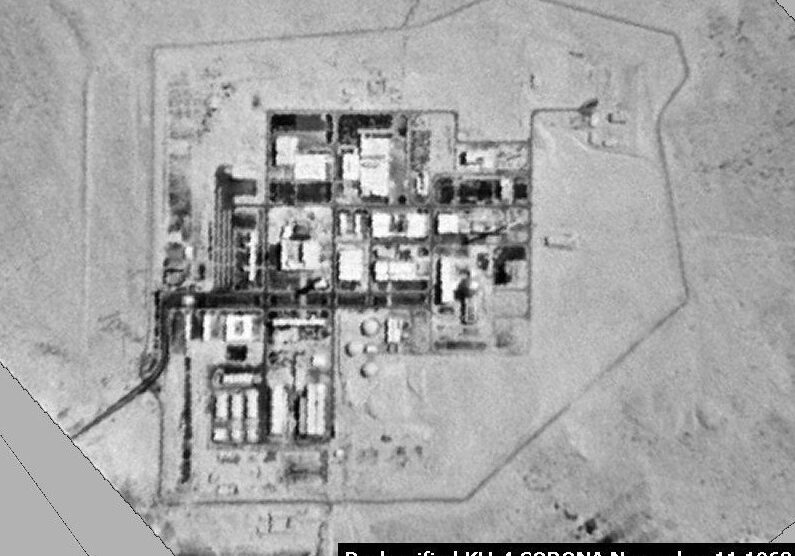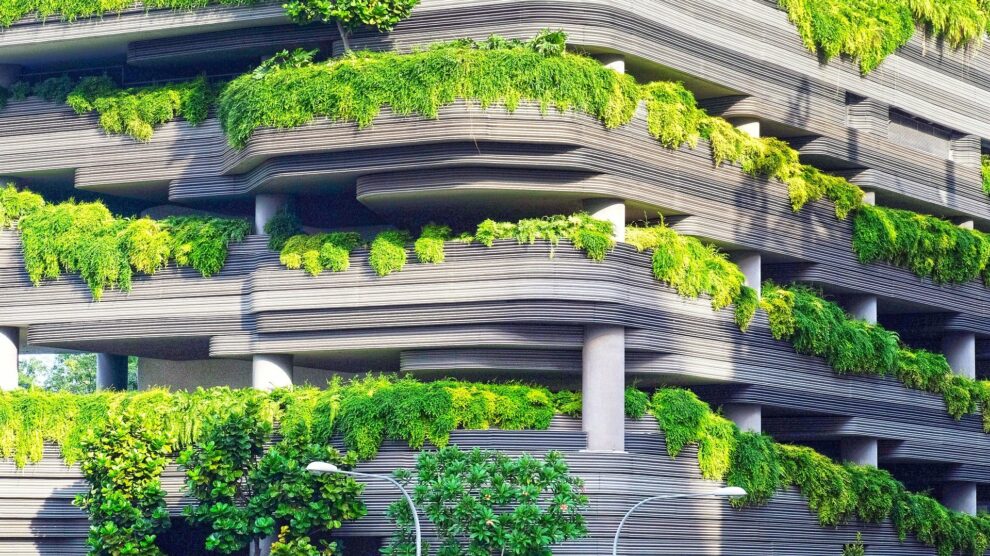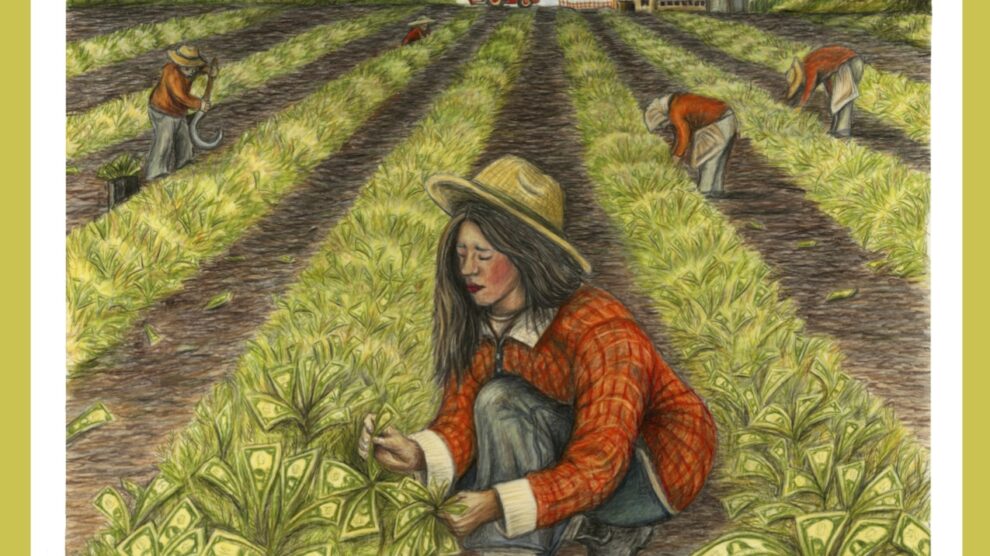Sticky Wall Corner
By/Por Gema Rupérez
Volume 23, number 2, A People’s Green New Deal
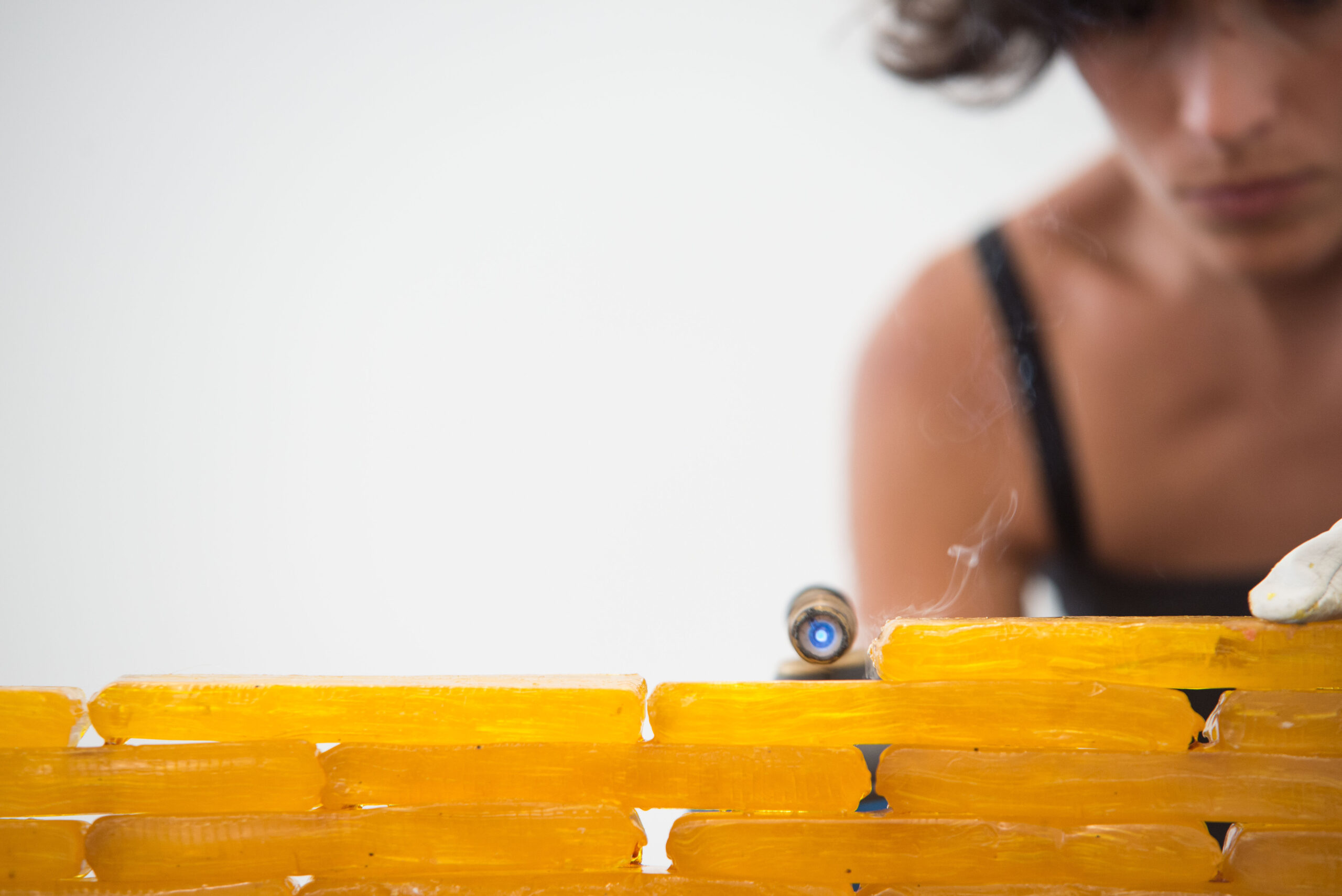
Sticky Wall Corner
2014 | Medidas variables (Variable dimensions)
Adoquines de caramelo ensamblados con calor (Heat-fused caramel bars)
«El significado del mundo es la separación entre las representaciones y las perturbaciones» – Koldo Mitxelena
Sticky Wall Corner nace de la idea de utilizar el adoquín de caramelo como elemento de construcción. Su tamaño y forma semejante a la de un ladrillo permite crear por yuxtaposición simulacros arquitectónicos, como en este caso un muro que alude a la estructura básica de la casa.
En el contexto social que nos encontramos, esta obra reflexiona sobre lo no habitable y la atracción de las aparencias como cimiento efímero. Por ello la presentación y representación de unas paredes comestibles. Muros que por dulces que sean no pierden su condición de límite, en este caso incrementada por la sensación repulsiva de su aspecto pegajoso.
Como consecuencia del vertiginoso desarrollo técnico-científico disponemos hoy de una multitud de materiales, algunos de ellos aparentemente sin tradición artística, y que en su día vinieron a ampliar las posibilidades de investigación plástica. A estos nuevos materiales dentro del arte hay que añadir la infiltración en la iconografía contemporánea de objetos que pertenecen a la vida cotidiana.
Además es interesante el empleo del caramelo como materia prima, porque al otorgarle esta nueva función constructiva se convierte en un objeto con independencia y solidez propia que sirve para la creación de un nuevo objeto con otras denotaciones y connotaciones.
El mundo moderno, dice el psicólogo Gérard Wajcman, «ha inventado la destrucción sin ruina».
“The meaning of the world is the separation between representations and perturbations” – Koldo Mitxelena
Sticky Wall Corner emerged from the idea of using the aldoquín1 as a construction material. Its size and brick-like form lend itself to the creation of architectural simulacra, in this case a wall that alludes to the basic structure of a house.
In the social context we find ourselves in, this piece reflects on the uninhabitable and on the allure of appearances, an ephemeral foundation. A presentation and representation of edible walls. Walls that, sweet as they may be, do not betray their limiting condition–a tension amplified by their repulsive stickiness.
Because of dizzying techno-scientific development, we find ourselves building from a plethora of materials, with and without artistic tradition, continuously expanding the potential of sculptural research. To these new art materials, we must add the contemporary iconography of objects pertaining to everyday life.
By accepting its new constructive function, the caramel is transformed into an object with its own solidity and independence that subsequently produces another, new object with other denotations and connotations.
According to psychologist Gérard Wajcman, the modern world “has invented destruction without ruin.”
~ Translation by Andres Chang
About the Artist
Gema Rupérez is a visual and plastic artist, director of Ababol Festival, and professor at the design school Hacer Creativo. Her work as an artist revolves around confrontation and the fight about hegemonic power. Instability, vulnerability and frustration are also part of the emotional content of her works. Through different means such as installation, photography, video, and drawing, her art reflects on the ability or inability to communicate, and ultimately on the dystopias of contemporary society. She can be found on Instagram at @gemaruperez.


